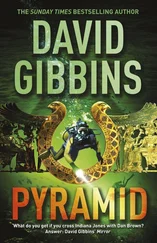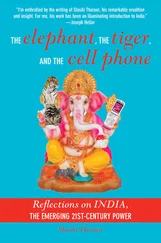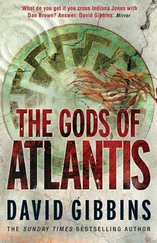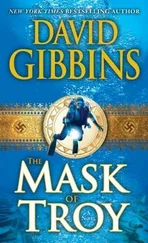David Gibbins - The Tiger warrior
Здесь есть возможность читать онлайн «David Gibbins - The Tiger warrior» весь текст электронной книги совершенно бесплатно (целиком полную версию без сокращений). В некоторых случаях можно слушать аудио, скачать через торрент в формате fb2 и присутствует краткое содержание. Жанр: Прочие приключения, на английском языке. Описание произведения, (предисловие) а так же отзывы посетителей доступны на портале библиотеки ЛибКат.
- Название:The Tiger warrior
- Автор:
- Жанр:
- Год:неизвестен
- ISBN:нет данных
- Рейтинг книги:4 / 5. Голосов: 1
-
Избранное:Добавить в избранное
- Отзывы:
-
Ваша оценка:
- 80
- 1
- 2
- 3
- 4
- 5
The Tiger warrior: краткое содержание, описание и аннотация
Предлагаем к чтению аннотацию, описание, краткое содержание или предисловие (зависит от того, что написал сам автор книги «The Tiger warrior»). Если вы не нашли необходимую информацию о книге — напишите в комментариях, мы постараемся отыскать её.
The Tiger warrior — читать онлайн бесплатно полную книгу (весь текст) целиком
Ниже представлен текст книги, разбитый по страницам. Система сохранения места последней прочитанной страницы, позволяет с удобством читать онлайн бесплатно книгу «The Tiger warrior», без необходимости каждый раз заново искать на чём Вы остановились. Поставьте закладку, и сможете в любой момент перейти на страницу, на которой закончили чтение.
Интервал:
Закладка:
Costas sighed. He glanced again at his Hawaiian shirt, then looked dolefully at Jack. They stared each other in the eye. Jack’s face broke into a broad smile, and Costas looked down, shaking his head. “What can I say.”
“Good to go?”
“Good to go.”
AUTHOR’S NOTE
THE SEEDS OF THIS STORY WERE PLANTED WHEN I first stood as an archaeology student among the ancient ruins of Harran in southern Turkey, near the Syrian border. The heat was stifling, the sky was lowering, and a wind had whipped up the dust and obscured the light. It seemed a place on the very edge of existence, and it made a deep impression on me. This was the site of the Battle of Carrhae, where a Roman army under Crassus had been catastrophically defeated by the Parthians in 53 BC. It seemed inconceivable that a battle could have been fought in such heat. I had read the story of captured legionaries being marched east, never to be heard of again. Could the rumors be true, that some of them might have escaped and undertaken a fantastic trek as far as China? In the years that followed, my own travels took me deep into central Asia along the ancient Silk Route, and on the trail of Roman seafarers who had traded as far east as the Bay of Bengal. I became fascinated by the early history of archaeological exploration in India during the period of British rule, and with the lives of my own ancestors who had been soldiers and adventurers there in the nineteenth century. Always my mind returned to the question of Crassus’ legionaries. Could there be a connection? Had these men truly risked everything to seek Chryse, the land of gold known to the traders? What tales had they been told of the fabled riches of the east? What could have driven them on?
The fate of Crassus’ lost legionaries from Carrhae is one of the most beguiling mysteries of ancient history. It exerted a strong pull on the Roman imagination; the poet Horace asked, “Did Crassus’ troops live in scandalous marriage to barbarians… grow old bearing arms for alien fathers-in-law…?” (Odes, iii, 5, trans. W G. Shepherd). For the Emperor Augustus, who agreed to peace terms with the Parthians in 20 BC, the return of the captured legionary standards was one of the greatest triumphs of his reign, celebrated by a famous series of gold and silver coins bearing the legend SIGNIS RECEPTIS, “The standards returned.”
The surviving ancient sources on Carrhae are all reliant on earlier histories, now lost. According to Plutarch, Crassus marched with “seven legions of men-at-arms, nearly four thousand horsemen and about as many light-armed troops” (Crassus, xx, 1), implying about forty thousand men. The identity of the legions is not known; however, Plutarch mentions that a thousand of the cavalry had “come from Caesar,” presumably veterans of Julius Caesar’s recent campaigns in Gaul and Britain. At that date, legionaries were still “citizen-soldiers” rather than career professionals, bound by terms of service not normally exceeding six years. The memories of the campaign in my prologue, including the ill omens on crossing the Euphrates, the death of Crassus and the humiliation of Caius Paccianus, are all from Plutarch (Crassus xix, xxxi-ii) and Dio Cassius (Roman History xl, 16-27); Plutarch has Crassus being killed by a Parthian, and Dio Cassius “either by one of his own men to prevent his capture alive, or by the enemy because he was badly wounded.” Afterward, “the Parthians, as some say, poured molten gold into his mouth in mockery.” Plutarch tells us that in the whole campaign “twenty thousand are said to have been killed, and ten thousand to have been taken alive.”
The only indication of the fate of those prisoners is a single line in the Natural History of Pliny the Elder, who describes Margiana, a city east of the Caspian Sea, as “the place to which the Roman prisoners taken in the disaster of Crassus were brought” (vi, 47). Margiana, present-day Merv in Turkmenistan, was a Parthian citadel and gateway to central Asia. The Roman prisoners could have been used to build the huge circuit of walls whose crumbling ramparts can still be seen at Merv today. The walls required rebuilding on numerous occasions, and it is intriguing to note that the Romans in Italy were first developing techniques of concrete construction at this time-the basis for the idea in the novel of how deliberate sabotage may have come about.
The suggestion that survivors of Carrhae may have escaped from Merv and made their way east comes from a controversial interpretation of Chinese written sources, first published in the 1950s. In 36 BC the Han Chinese mounted an expedition against the Hsiung-nu, the Huns, who were establishing a foothold in Sogdiana in central Asia. The ancient History of the Former Han Dynasty contains an account of the Han siege of the Hsiung-nu fortress, probably based on contemporary paintings, including a passage translated as more than a hundred foot-soldiers lined up in a “fish-scale” formation (chs. ix, xxiv-v). Some modern scholars have equated this with the testudo, the “tortoise,” a Roman formation in which shield was locked with shield, as Plutarch put it in his account of Carrhae (Crassus xxiv, 3). The Han army also found a “double wooden palisade” outside the citadel, a description perhaps reminiscent of Roman fortification techniques. These two references have led some to imagine that the Hun army included Roman mercenaries.
Nothing definitive has yet been found in the archaeology of central Asia to support this idea. The most intriguing discovery is an inscription in southern Uzbekistan, some five hundred kilometers east of Merv, similar to the fictional inscription in chapter 3; it may refer to the Fifteenth Legion, possibly an Imperial legion of that number founded in AD 62, but conceivably a legion of the same number from the century before. A thousand kilometers northeast from there lies Cholpon-Ata, the extraordinary field of boulders with petroglyphs-rock carvings-beside Lake Issyk-Kul in Kyrgyzstan. The images mainly relate to the spiritual life of the local population, but Issyk-Kul was a staging post on the Silk Route and my own explorations there suggest the potential for discovering other inscriptions. In a mountain valley to the south, I rode a horse that may have descended from the fabled akhal-teke, the blood-sweating heavenly horses of Chinese mythology. The lake itself contains inundated ancient structures and artifacts, and rumors abound of sunken cities and tombs, even that of Genghis Khan himself; archaeological diving now underway in the lake could produce wonderful discoveries in the near future.
More than fifteen hundred kilometers southeast, past the forbidding Taklamakan Desert, lies the village of Zhelaizai in Gansu province of China. Some believe this to have been Lijian, a place where prisoners from the battle against the Huns in 36 BC may have been settled. The name Lijian-perhaps derived from “Alexander”-may have meant “westerner.” The population today does indeed contain a striking number of green-eyed, fair-featured people, though DNA analyses to test for western origins have proved inconclusive. Silk Route travelers would have passed this place close to the end of their journey toward Xian, site of the tomb of the First Emperor, Shihuangdi , at Mount Li outside the city. The “Brotherhood of the Tiger” in this novel is fictional, but the idea is based on other Chinese secret societies, and the fiefdoms are those of the First Emperor’s family (Records of the Grand Historian, Shi ji 5). “Tiger Cavalry” were employed as the Emperor Ts’ao Ts’ao’s personal bodyguard in the third century AD, perhaps based on an earlier bodyguard; their weapons could have included prized bronze halberds such as the one in this novel, based on an actual halberd on display in the British Museum (OA 1949.5-18 1,2). The tomb itself was said to have been guarded by twenty households, supposedly the basis for twenty modern villages around Mount Li, so the idea of a hereditary custodian is rooted in the history of this extraordinary site, one of the remaining unexcavated wonders of the ancient world.
Читать дальшеИнтервал:
Закладка:
Похожие книги на «The Tiger warrior»
Представляем Вашему вниманию похожие книги на «The Tiger warrior» списком для выбора. Мы отобрали схожую по названию и смыслу литературу в надежде предоставить читателям больше вариантов отыскать новые, интересные, ещё непрочитанные произведения.
Обсуждение, отзывы о книге «The Tiger warrior» и просто собственные мнения читателей. Оставьте ваши комментарии, напишите, что Вы думаете о произведении, его смысле или главных героях. Укажите что конкретно понравилось, а что нет, и почему Вы так считаете.












